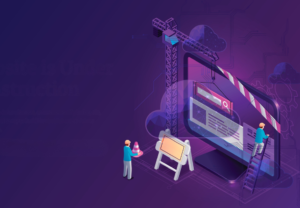Precision Medicine, Proactive Care: The Data-Driven Transformation of Healthcare with AI
“AI is enabling precision medicine and proactive care by integrating genomics, EHRs, and predictive analytics. GenAI and Agentic AI are improving diagnostics, treatment planning, and operational efficiency. With strategic adoption and ethical frameworks, healthcare organisations can achieve measurable outcomes and competitive advantage.”
The healthcare industry faces an unsettling reality, nearly 90% [7] of drug candidates fail in clinical trials, costing billions annually whilst chronic diseases like diabetes and heart failure consume over 75% [2] of global healthcare expenditure. These staggering statistics represent more than failed investments; they signal the urgent need for fundamental transformation in how healthcare operates.
The convergence of artificial intelligence, advanced data analytics, and genomics is catalysing an upward shift from reactive treatment models to proactive, precision-driven care. This transformation represents not merely a technological upgrade but an economic and strategic reconfiguration of healthcare’s value proposition. Healthcare organisations that master AI-driven precision medicine and predictive analytics will gain decisive competitive advantages in an increasingly complex market.
The State of AI Adoption in Healthcare: From Scepticism to Necessity
Healthcare’s relationship with artificial intelligence has evolved from cautious experimentation to strategic necessity. The AI in precision medicine market demonstrates this acceleration, projected to grow from USD 1.2 billion in 2022 to USD 17.1 billion by 2032, representing a CAGR exceeding 30%. [5] This explosive growth reflects healthcare organisations’ recognition that AI solutions address fundamental operational and clinical challenges.
Survey data reveals the urgency driving adoption decisions. A comprehensive study by SAS indicates that 95% of healthcare organisations plan to implement generative AI within the next two years. [8] This widespread commitment stems from persistent industry pressures including clinician burnout, data overload, and operational inefficiencies that traditional approaches cannot resolve. [6]
Three primary drivers accelerate AI adoption across healthcare systems,
- a) Clinical burden reduction: Administrative tasks consume approximately 40% of clinicians’ time, creating burnout whilst reducing patient interaction quality
- b) Data complexity management: Healthcare generates 2.5 exabytes of data daily, yet most organisations utilise less than 20% of available information for decision-making
- c) Operational cost pressures: Healthcare costs continue rising faster than inflation, demanding efficiency improvements that maintain or improve care quality
The transition from scepticism to strategic implementation reflects healthcare leadership’s recognition that AI represents an operational imperative rather than optional innovation.
Deconstructing the AI Toolkit: GenAI, Agentic AI, and Custom ML Models
- 1. ) The Role of Generative AI: Structuring the Unstructured
Generative AI addresses healthcare’s most persistent challenge, extracting actionable insights from unstructured data sources. Clinical notes, radiology reports, patient conversations, and medical literature represent vast information repositories that traditional systems cannot efficiently process. [4]
GenAI’s transformative capability lies in converting unstructured clinical data into structured, analysable formats. This conversion enables healthcare organisations to leverage previously inaccessible information for clinical decision-making and operational improvements. Synthetic data generation represents another critical application, allowing organisations to develop and train AI models whilst maintaining patient privacy and regulatory compliance under HIPAA requirements. [11]
- 2.) The Importance of Agentic AI: Automating Complex Workflows
Agentic AI extends beyond simple task automation to perform multi-step, complex workflows autonomously. Healthcare operations involve numerous interconnected processes including appointment scheduling, claims processing, inventory management, and care coordination that require sophisticated decision-making capabilities.
Unlike traditional automation that follows predetermined rules, agentic AI adapts to contextual variations and handles exceptions intelligently. This capability proves particularly valuable in clinical decision support systems where patient presentations rarely follow standard patterns. [3]
EY projects that healthcare organisations implementing comprehensive agentic AI solutions will achieve productivity gains of 30-32% by 2030. These improvements result from automating routine decisions whilst augmenting clinical expertise for complex cases requiring human judgement. [6]
- 3.) How ML-Driven Custom AI Models Power Precision
Machine learning models trained on genomic data, diagnostic imaging, and electronic health records enable personalised predictions that traditional statistical methods cannot achieve. Custom ML models analyse patterns across multiple data types to identify subtle indicators of disease progression, treatment response, and adverse events. [10]
Two compelling use cases demonstrate custom ML models’ clinical value. Genomic data analysis predicts cancer therapy response with greater accuracy than conventional biomarkers, enabling oncologists to select optimal treatment protocols whilst avoiding ineffective interventions. Similarly, ML models trained on electronic health record patterns detect early indicators of sepsis or diabetes complications, allowing preventive interventions before acute episodes occur. [9]
The integration of generative AI, agentic systems, and custom ML models creates a comprehensive AI toolkit that addresses healthcare’s diverse operational and clinical requirements.

Use Cases in Action
- 1. ) Accelerating Drug Discovery and Development
Pharmaceutical development represents healthcare’s most expensive and risk-prone activity. Traditional drug discovery requires 10-15 years and costs exceeding USD 2.6 billion per approved medication. [13] [14] [15] [16] The approximately 90% failure rate creates enormous economic waste whilst delaying potentially life-saving treatments. [7]
AI-driven drug discovery platforms fundamentally alter this equation. Generative AI proposes novel molecular structures based on desired therapeutic properties, whilst ML models simulate drug-target interactions and predict toxicity profiles. This computational approach identifies promising candidates more efficiently than traditional laboratory screening.
Companies implementing comprehensive AI-driven drug discovery report timeline reductions of 2-3 years and cost savings exceeding 40%. [11] These improvements accelerate patient access to innovative treatments whilst improving pharmaceutical development economics.
- 2.) Hyper-Personalised Treatment Pathways in Oncology
Oncology treatment has historically followed population-based protocols that may not optimally address individual patient characteristics. One-size-fits-all approaches often result in ineffective treatments, unnecessary side effects, and delayed optimal therapy selection.
AI in personalised patient treatment plans integrates genomic sequencing, pathology analysis, and diagnostic imaging to create comprehensive patient profiles. Machine learning algorithms analyse these multi-modal data sources to predict treatment responses and identify optimal therapeutic combinations for individual patients.
Clinical implementation demonstrates measurable improvements in both efficacy and safety outcomes. Patients receiving AI-guided personalised treatment plans show higher response rates and reduced adverse events compared to standard protocol-based care. [9]
- 3.) Predictive Analytics for Patient Outcomes
Chronic disease management represents healthcare’s greatest cost driver whilst offering significant opportunities for AI-driven improvements. Traditional care models react to acute episodes rather than preventing complications through proactive intervention.
Predictive analytics platforms combine wearable device data, electronic health records, and social determinants information to identify patients at risk for adverse events. These systems enable care teams to intervene before hospitalisation becomes necessary, improving patient outcomes whilst reducing costs. [8]
Healthcare organisations implementing comprehensive predictive analytics report reduced hospital readmissions by 20-30% and emergency department visits by 25%. [17] [18] [19] These improvements translate into substantial cost savings whilst improving patient satisfaction and health outcomes.
AI-Driven Operational Excellence for Hospitals
Hospital operations represent healthcare’s most complex resource management challenge. Bed capacity constraints, unpredictable patient flow, extended length of stay, and diagnostic delays create cascading inefficiencies that compromise both clinical outcomes and financial performance. Artificial intelligence addresses these operational pressures through predictive analytics and intelligent resource allocation that traditional management approaches cannot achieve.
- 1.) Optimising Hospital Length of Stay Through Predictive Analytics
Length of stay represents a critical performance indicator that directly impacts hospital capacity, operational costs, and patient outcomes. Extended hospitalisation increases infection risks, reduces bed availability for incoming patients, and elevates care delivery costs without corresponding improvements in clinical results.
Machine learning-based prediction systems have demonstrated substantial reductions in hospital length of stay. For instance, Cedars-Sinai Medical Center reported an 11.9% decrease for intracranial haemorrhage (ICH) patients and a 26.3% decrease for pulmonary embolism (PE) patients after implementing AI-driven radiological triage solutions. [20] These improvements stem from AI systems that analyse diagnostic imaging data in real time, enabling prioritisation of critical cases for immediate specialist review, bypassing conventional sequential workflows.
Comprehensive AI-driven patient flow management systems have reduced waiting times by 37.5% and improved bed occupancy efficiency by 29%, according to a study. [21] These systems integrate data from emergency department arrivals, surgical schedules, discharge predictions, and bed turnover rates to enable dynamic, real-time capacity management.
Healthcare organisations implementing predictive length of stay models gain actionable intelligence for discharge planning, resource allocation, and capacity management. Early identification of patients likely to require extended hospitalisation enables proactive care coordination, reducing preventable delays whilst improving clinical outcomes. Conversely, accurate prediction of shorter stays allows hospitals to optimise bed assignments and schedule elective procedures with greater confidence.
- 2.) Intelligent Bed Capacity Management and Resource Allocation
Bed capacity constraints create operational bottlenecks that cascade throughout healthcare systems. Emergency departments experience overcrowding when inpatient beds remain unavailable, elective procedures face cancellations, and staff face increased pressure managing patient placement decisions without adequate decision-support tools.
Traditional bed management relies on historical occupancy patterns and manual coordination between departments. These approaches cannot adequately account for the multiple variables that influence bed demand including seasonal disease patterns, local demographic shifts, and unpredictable emergency admissions. Machine learning models analyse historical admission data, discharge patterns, and seasonal trends to forecast hospital capacity requirements with precision that manual planning cannot match.
Healthcare organisations implementing AI-driven capacity optimisation have reported additional revenue of approximately $10,000 per inpatient bed annually and a 6% increase in operating room case volumes. [21] These gains are attributed to reduced idle capacity and improved alignment of resources with actual demand patterns.
The strategic value extends beyond immediate financial returns. Hospitals implementing predictive bed management report improved staff satisfaction due to reduced last-minute crisis management, enhanced patient experience through shorter waiting times, and better clinical outcomes from placing patients in appropriate care settings promptly rather than using suboptimal temporary accommodations.
- 3.) Accelerating Diagnostic Accuracy and Clinical Decision Support
Diagnostic delays and errors remain a persistent challenge in healthcare. A study published in BMJ Quality & Safety estimated that diagnostic errors affect approximately 5.08% of outpatient clinical encounters in the U.S., equating to nearly 12 million adults annually. [22] About half of these errors have the potential to cause serious harm.
AI diagnostic systems have demonstrated accuracy rates of up to 93% in heart disease classification, particularly when using ensemble machine learning models such as XGBoost and Bagged Trees. These systems analyse a combination of data sources including electrocardiograms (ECGs), medical imaging, laboratory results, and patient history to detect patterns that may elude individual clinicians, especially in cases with atypical presentations or subtle early-stage indicators. [24] For example, a Mayo Clinic study applied AI to ECG data and achieved 93% accuracy in detecting left ventricular dysfunction, a condition often missed in early stages. [25] Similarly, deep learning-based mobile ECG devices like Rhythmi have demonstrated diagnostic accuracies exceeding 98% in controlled environments, although further clinical validation is required. [26]
Clinical studies have shown that diagnostic accuracy improves by 4.4% when clinicians review patient cases alongside AI model predictions and explanations, compared to baseline accuracy without AI assistance. [23] While this may appear modest, in large hospital systems, it translates into thousands of patients receiving more accurate diagnoses, directly influencing treatment decisions and outcomes.
The integration of AI diagnostic support into clinical workflows addresses several operational challenges simultaneously. Radiologists managing increasing scan volumes benefit from AI systems that pre-screen imaging studies, prioritising cases requiring urgent attention whilst flagging subtle findings that demand careful review. Pathologists analysing tissue samples gain quantitative assessment tools that complement visual examination, improving consistency whilst reducing interpretation time for complex cases.
- 4.) Test Ordering Optimisation and Resource Utilisation
Healthcare organisations face persistent challenges with inappropriate test ordering that increases costs without improving clinical outcomes. Unnecessary diagnostic tests consume laboratory resources, delay definitive diagnosis, and expose patients to potential complications from invasive procedures or radiation exposure.
AI-powered clinical decision support systems analyse patient presentation data, medical history, and existing test results to recommend evidence-based diagnostic pathways. These systems identify when proposed tests provide minimal additional diagnostic value given existing information, suggesting alternative approaches that achieve clinical objectives more efficiently.
The operational impact extends throughout hospital systems. Emergency departments reduce turnaround times when avoiding unnecessary tests that delay disposition decisions. Laboratories manage workload more efficiently when test volumes align with clinical necessity rather than defensive medicine practices. Finance departments capture cost savings whilst maintaining or improving diagnostic quality, creating sustainable operational models in resource-constrained environments.
- 5.) Strategic Implementation Requirements for Operational AI
Hospital leadership pursuing AI-driven operational improvements must address several critical success factors. Data infrastructure requires integration across traditionally siloed systems including electronic health records, laboratory information systems, radiology PACS, admission-discharge-transfer platforms, and staffing management tools. Many healthcare organisations operate legacy systems that lack standardised data formats or interoperability capabilities, necessitating careful planning for AI implementation.
Clinical workflow integration represents another essential consideration. AI systems that generate recommendations outside existing clinical processes face adoption resistance regardless of technical performance. Successful implementations embed AI insights into workflows at decision points where clinicians naturally require information, minimising additional steps whilst maximising utility.
Change management and staff training prove critical for sustainable adoption. Healthcare professionals require understanding of AI system capabilities, limitations, and appropriate use cases. Organisations that position AI as augmenting rather than replacing clinical expertise achieve better adoption rates and realise greater value from technology investments.
The operational transformation that AI enables creates competitive advantages for healthcare organisations in increasingly challenging markets. Hospitals that successfully implement comprehensive AI solutions for capacity management, length of stay optimisation, and diagnostic support gain improved financial performance, enhanced patient outcomes, and sustainable operational efficiency that traditional management approaches cannot deliver.
Navigating AI Adoption Challenges in Healthcare
Healthcare organisations face distinct challenges when implementing AI solutions that other industries do not encounter. Understanding and addressing these obstacles proves critical for successful AI deployment.
Data privacy requirements under HIPAA and GDPR create complex compliance obligations that traditional AI approaches may violate. HIPAA compliance for AI healthcare solutions requires careful attention to data handling, access controls, and audit trails. Synthetic data generation offers a promising solution, enabling model development whilst maintaining patient confidentiality. [11]
Algorithmic bias represents another significant concern. Training data that inadequately represents diverse patient populations can create AI systems that perform poorly for underserved communities. Healthcare organisations must implement bias detection and mitigation strategies throughout the AI development lifecycle. [2]
Legacy system integration poses technical challenges unique to healthcare. Most healthcare organisations operate complex; interconnected systems developed over decades. AI adoption challenges in healthcare interoperability require careful planning and phased implementation approaches to avoid disrupting critical operations. [1]
Clinician trust remains essential for successful AI implementation. Healthcare professionals require confidence that AI recommendations enhance rather than replace clinical judgement. Explainable AI approaches that provide transparent reasoning for recommendations help build clinician acceptance and appropriate utilisation. [3]

A Strategic Approach to AI Adoption and The Motherson Advantage
Successful AI implementation requires systematic planning that addresses technical, operational, and cultural requirements. Healthcare leadership must follow structured approaches that maximise return on investment whilst minimising implementation risks.
The strategic framework begins with identifying high-impact use cases that offer clear ROI of artificial intelligence in clinical settings. Organisations should prioritise applications that address current pain points whilst building capabilities for future innovations. Common starting points include administrative automation, clinical decision support, and predictive analytics for high-risk patients.
Building ethical data governance represents the second critical step. Organisations must establish data quality standards, security protocols, and bias mitigation processes before deploying AI systems. This foundation ensures compliance whilst enabling scalable AI implementation across multiple use cases.
Fostering collaboration between data scientists, IT professionals, and clinicians proves essential for sustainable AI adoption. Cross-functional teams ensure that AI solutions address real clinical needs whilst meeting technical and regulatory requirements.
Motherson Technology Solutions enables healthcare organisations to accelerate AI adoption through comprehensive technical and strategic support. Our expertise encompasses custom ML model development, generative AI platform implementation, and synthetic data generation for privacy-compliant AI training.
MTSL’s human-centric design approach ensures that AI solutions integrate seamlessly into clinical workflows whilst augmenting rather than replacing healthcare professional expertise. Our strategic consulting services address compliance requirements, scalability planning, and measurable outcome definition that healthcare leadership requires for successful AI initiatives.
Partnership with MTSL enables healthcare leaders to transition from AI strategy development to practical implementation whilst gaining competitive advantages in the evolving healthcare market.
Conclusion
AI, Gen AI, agentic systems, and custom machine learning models represent strategic enablers rather than merely technological tools. Healthcare organisations that successfully implement comprehensive AI strategies will lead the emerging proactive health economy. The convergence of precision medicine, predictive analytics, and intelligent automation creates unprecedented opportunities for improving patient outcomes whilst achieving sustainable operational efficiency.
With appropriate partnerships and implementation frameworks, healthcare leadership can capitalise on AI’s transformative potential to create lasting competitive advantages in an increasingly complex and demanding market environment.
References
[1] https://www.advamed.org/wp-content/uploads/2024/11/AdvaMed-AI-White-Paper-Final.pdf
[2] https://reports.weforum.org/docs/WEF_The_Future_of_AI_Enabled_Health_2025.pdf
[3] https://academic.oup.com/jamia/article/32/7/1093/8125015
[4] https://evinent.com/blog/generative-ai-in-healthcare
[5] https://www.rootsanalysis.com/reports/generative-ai-in-healthcare-market.html
[7] https://www.creolestudios.com/generative-ai-in-healthcare-use-cases/
[8] https://www.sas.com/en_in/news/press-releases/2025/march/genai-study-healthcare-lifesciences.html
[9] https://www.mdpi.com/2075-4426/14/4/418
[10] https://jbiomedsci.biomedcentral.com/articles/10.1186/s12929-024-01110-w
[11] https://link.springer.com/article/10.1007/s10462-024-10768-5
[12] https://www.mdpi.com/2306-5354/12/5/440
[16] https://www.theactuarymagazine.org/traditional-drug-development-process/
[17] https://www.espjournals.org/IJACT/2024/Volume2-Issue3/IJACT-V2I3P105.pdf
[18] https://healthcarereaders.com/insights/predictive-analytics-in-healthcare-using-big-data
[19] https://www.jabfm.org/content/37/4/583
[20] https://www.aidoc.com/learn/ebooks-whitepapers/how-ai-reduced-length-of-stay-across-service-lines/
[22] https://qualitysafety.bmj.com/content/23/9/727
[23] https://www.digitalhealthglobal.com/study-reveals-impact-of-ai-on-clinician-diagnostic-accuracy/
[24] https://bmccardiovascdisord.biomedcentral.com/articles/10.1186/s12872-025-04627-6
[25] https://www.mayoclinic.org/departments-centers/ai-cardiology/overview/ovc-20486648
About the Author:

Rajen Ghosh is a strategy and digital transformation leader with 20+ years of experience in the IT Industry working across the Americas, Europe, and the Middle East. He comes with deep expertise in creating and executing business strategy, solving complex business challenges, building high-performing teams, and overseeing complex technology-led transformation programmes. He has helped many organizations across pharmaceutical, manufacturing, financial services, and FMCG industry sectors to adopt a data-first and AI-first operating model. He is a vivid speaker and AI enthusiast who loves to speak on technology transformation and artificial intelligence in industry forums as well as with the analyst & advisor community.

 October 28, 2025
October 28, 2025 Rajen Ghosh
Rajen Ghosh















































